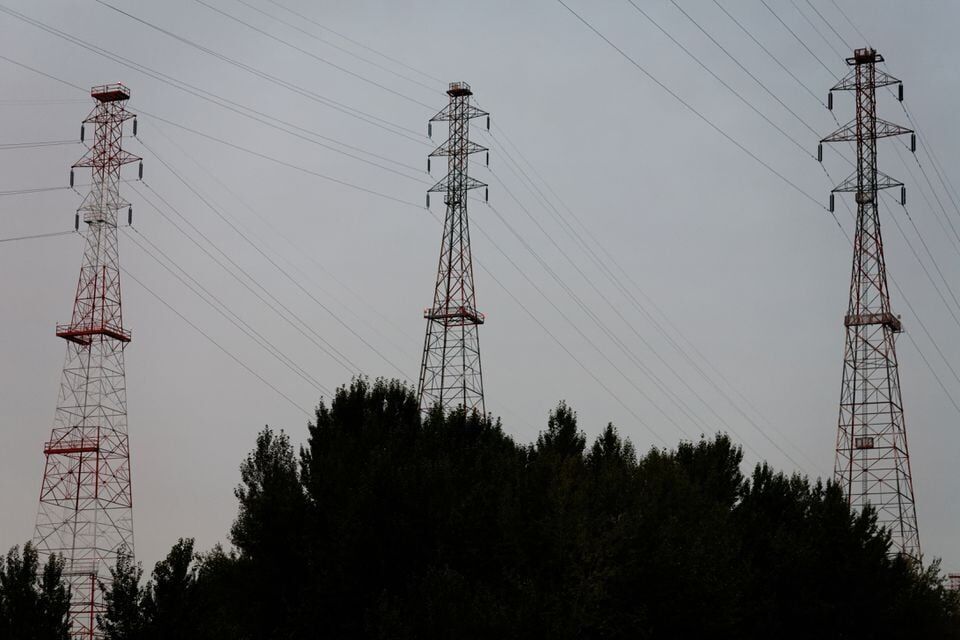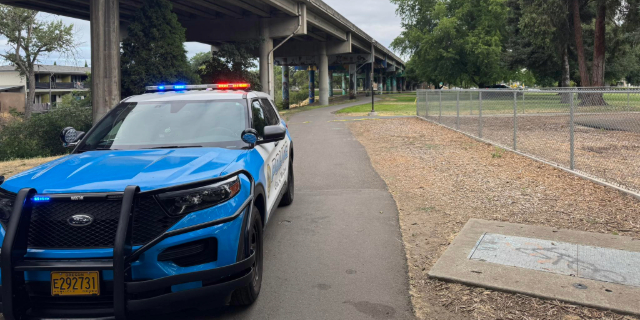How Oregon plans to handle ‘staggering’ demand for new transmission lines
Published 6:00 am Tuesday, February 11, 2025
Over the next decade, Oregon’s need for clean energy is expected to grow exponentially thanks to rising demand for electricity from data centers, heat pumps, electric cars and state climate mandates.
Trending
And though developers are clamoring to build more solar, wind and battery storage projects, the region faces a major hurdle to expanding the energy flow: It doesn’t have enough transmission lines to connect the projects into the electric grid and carry electricity to homes and businesses.
But building new transmission lines is extremely costly, takes 10 to 20 years and requires navigating myriad impacts to landowners, Indigenous sites and wildlife areas.
So state lawmakers are working on several bills that would ease the planning, siting, permitting and building of transmission lines – but also require alternatives.
Trending
“We are expecting a 30% load growth statewide over the next 10 years and a 100% load growth over the next 30 years. And our transmission system is at capacity,” said Rep. Mark Gamba, D-Milwaukie, who co-chairs the legislative environmental caucus.
“That’s really problematic,” he said, “because we’re not going to hit any of our climate goals, nor are we going to be able to ensure that we have reliable energy going forward.”
Build-out slowdown
One large operator now controls most of the region’s transmission system.
The Bonneville Power Administration, a federal agency that markets hydropower from 31 federal dams in the Columbia River Basin, owns and operates 75% of the Northwest’s high-voltage lines.
BPA built much of its 15,000-mile high-voltage system from the late 1930s to the 1970s, coinciding with the construction of the dams. The build-out then slowed significantly. Since 1990, BPA has added just over 300 miles of transmission to its system.
The state’s three investor-owned electric utilities also manage a small portion of transmission lines in Oregon. Portland General Electric has 1,254 miles of transmission lines. Pacific Power operates 3,068 miles of transmission and Idaho Power has 753 miles. The three utilities rely on BPA’s extensive transmission infrastructure to move electricity over long distances.
The problem: BPA’s transmission lines are now nearly full. In recent years, the agency has been swamped with requests from developers and utilities to connect new clean energy projects to its grid – requests that show no signs of easing and that, for the most part, BPA cannot quickly meet.
BPA has 68,000 megawatts of requests in its transmission service queue, representing 641 unique requests, said Doug Johnson, the agency’s spokesperson. That’s a record for BPA, Johnson said, at a four-fold increase from the previous request amount.
The 68,000 megawatts is nearly 10 times the generating capacity of the Grand Coulee Dam, the largest dam on the Columbia River. It’s enough to light up 68 cities the size of Seattle, which has an average consumption of roughly 1,000 megawatts – that’s assuming all the wind and solar projects in the request queue were built and running at once at their maximum capacity.
“Those are staggering numbers,” Johnson said. He added that it’s unlikely all of the projects associated with the requests will move forward because some are not ready.
In response, BPA proposed in 2023 and 2024 spending a total $5 billion on 23 transmission projects – mostly upgrades to existing lines and stations and two new transmission projects, a 53-mile line from La Pine to Bonanza and a 265-mile line from the Columbia River to the Oregon-Nevada border.
BPA’s administrator will approve the projects after an environmental review, unless other technologies or alternatives are identified, Johnson said. Some of the projects could be done as early as 2027, with others by the next decade.
But those upgrades are not enough to serve the region, Gamba said, and they will take years to go through design and permitting before construction can begin. And with data centers’ power use projected to double by 2030, periodic blackouts may be inevitable if the region fails to add enough generation and transmission.
Even without the projected future load growth, there are days today when local utilities “teeter on the edge of rolling blackouts,” Gamba said.
The most prominent transmission project in Oregon – of which BPA was a partner until it pulled out in 2022 – is the 300-mile, 500-kilovolt transmission line between Boardman and the Hemingway substation in Owyhee County, Idaho. It was first proposed in 2007 to deliver energy generated on the High Plains to electricity markets in the Pacific Northwest.
The project, now co-owned by Idaho Power and PacifiCorp, has dragged on for years due to lengthy federal and state permitting processes, landowner lawsuits and conflicts over sage grouse and other wildlife. Construction is set to launch this year, though legal appeals are still ongoing.
“The process is clearly too long,” Gamba said. “It cannot take nearly 20 years to site a new transmission line.”
Speed up planning
The transmission bills stem from a working group brought together by Gamba that includes utilities, climate and environmental nonprofits, renewable energy organizations, the Oregon Department of Energy and other major players.
One of the problems with efficiently expanding transmission capacity in the state is that Oregon – like much of the Northwest – is not a member of a regional transmission organization. The goal of such independent entities is to plan and operate the transmission system across one or several states.
BPA had for a while acted like such an organization for eastern Washington and Oregon, Gamba said, but it stopped doing so in recent decades and no other entity has taken up that mantle.
Gamba’s key proposal to speed up building and upgrading transmission lines would establish the Oregon Electric Transmission Authority as an independent public corporation. The authority would identify and establish transmission corridors and finance, develop, construct and upgrade transmission lines across Oregon.
The authority’s budget would come via a surcharge to large industrial utility customers. To pay for transmission projects, it would issue revenue bonds and collect payments from the utilities using the authority’s transmission lines. Utilities and developers could still build lines as well. Washington state also is working on setting up a similar transmission authority.
“A transmission authority is planning for and driving the thought process about getting transmission built,” Gamba said. “It’s looking at the entire system and saying, ‘OK, how’s our system functioning? Where are we getting growth? Are we keeping up with our clean energy targets? What should we be preparing for? Where should we be building new transmission?’ There’s nobody that’s doing that for the state right now.”
Gamba said legislators looked to Colorado and New Mexico as models in crafting the bill, currently designated Legislative Concept 3681. New Mexico created a transmission authority 15 years ago and has since developed and energized two major transmission lines. Colorado adopted a similar bill based on New Mexico’s.
Johnson, the BPA spokesperson, declined to comment on the transmission authority bill as well as on the other bill proposals.
Renewable energy advocates said the legislation is a top priority in this session because it provides another tool to ensure the necessary transmission gets built to help maintain a reliable grid and meet the state’s clean energy mandates.
Oregon requires the state’s two major electric companies to reduce greenhouse gas emissions associated with electricity sold in Oregon by 80% by 2030 and to reach 100% emission-free electricity sources by 2040.
“There are several agencies in Oregon that regulate the development of transmission, but there are none who are looking at this critical infrastructure from the perspective of Oregon’s economic growth and clean energy goals while also keeping an eye out for consumer protection,” said Nicole Hughes, executive director of Renewable Northwest, a nonprofit that advocates for building more solar, wind and storage projects to meet climate goals in Oregon, Washington, Montana and Idaho.
“We think this is an important view a state transmission authority can bring to the state,” she said.
New technologies
Legislators are also seeking to mandate alternatives to building new transmission lines and save ratepayers money.
Transmission operators, for instance, could upgrade existing lines with new wires – called conductors – that carry significantly more electricity and are far less likely to start fires.
They could also use “grid-enhancing technologies,” including sensors, power-flow control devices and software to manage transmission congestion, improve operational efficiency and provide real-time data for operators to make more informed decisions.
Such technologies do not require permitting or siting, avoid the environmental and social conflicts and are a lot less expensive – and hence cheaper for ratepayers. New transmission lines can cost between $2 million to nearly $7 million per mile to construct, depending on the voltage. A 100-mile high-voltage line would cost several hundreds of millions of dollars.
The Connected West study, a 20-year transmission planning assessment released last September by Gridworks, a nonprofit that helps states move to renewable energy, found that a significant portion of new transmission capacity needs in the western U.S. over the next two decades could be met by enhancing existing transmission lines. That includes by replacing existing wires with new, advanced ones or expanding the existing transmission corridors.
While it’s still unclear how much these technologies could reduce or offset new transmission lines in Oregon, another 2024 study found such grid enhancements could, during certain times of the year, boost how much electricity can be moved through lines by up to 50 % across the existing grid.
“We are trying to figure out ways to get the utilities and Bonneville to lean into that,” Gamba said.
PGE’s spokesperson Andrea Platt said the utility is already using new technologies, including in Forest Park, where it seeks to upgrade wires and add a new line in an existing right of way it owns. The project is controversial because it would lead to the removal of more than 370 trees on five acres in the park.
“PGE is actively deploying grid enhancing technologies precisely to help maximize existing equipment and minimize environmental and property impacts,” Platt said.
Legislators also have introduced a House Joint Memorial – a type of measure that allows state legislatures to express a collective opinion to the federal government – requesting the U.S. Department of Energy and Congress to urge BPA to build out its electrical transmission system across the West, use grid-enhancing technologies and increase transparency on construction costs.
Ease up permitting
Another proposal, Legislative Concept 2730, aims to simplify transmission permitting at the state level, but crafting the bill has been an exercise in frustration, Gamba said.
Typically, transmission projects must first go through a federal environmental review process under the Federal Energy Regulatory Commission and then through a state land-use based review through the Oregon Energy Facility Siting Council.
In the case of the Boardman-to-Idaho line, the federal review took seven years, the state one five years and resolving lawsuits took several more years, Gamba said.
Legislators at first sought to eliminate Oregon’s review process if a renewable energy project or a transmission line are entirely on federal land – to save time, not because it’s a bad process, Gamba added.
But, given Donald Trump’s re-election and the potential for a Trump rollback of environmental standards – including the National Environmental Policy Act, which requires federal agencies to assess the environmental effects of transmission lines and other projects – the working group convened by Gamba decided to eliminate this part of the bill, Gamba said.
Gamba said the bill would include several small steps that should speed the permitting process at the state level, though it remains a work in progress, he said.
Oregon’s biggest utilities said they support Gamba’s bills.
“Upgrading and expanding transmission capacity is critical to serving reliable, affordable and increasingly clean energy,” said Platt, the PGE spokesperson. “Addressing siting and permitting challenges are the most important actions the Legislature can take to support transmission development.”
Idaho Power, which said the lengthy permitting process had delayed and added cost to its Boardman-to-Hemingway line, said it too hoped for transmission permitting reform at state and federal levels.
The hope, Gamba said, is that the bills heighten the need for swift action and novel solutions to build out Oregon’s transmission. He said he’s working with environmental groups, including The Nature Conservancy and the Oregon Environmental Council, and does not expect major opposition from them.
“We have all become very dependent on our electricity and we are running up hard against the capacity of our current system. We’re going to have to think outside of the box and do things that we have not done before,” Gamba said. “And a little bit of a sense of urgency in people’s minds would not be unwarranted, because we will all be losing our minds when the rolling blackouts start.”










